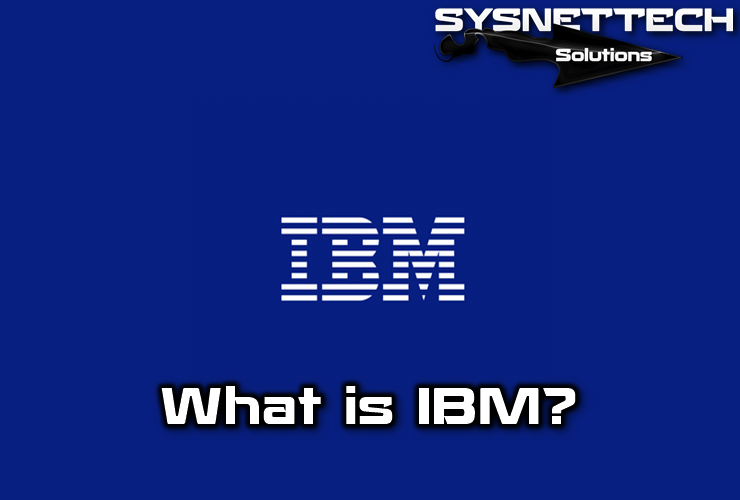IBM (International Business Machines) is a trading company that produces and markets computing-related tools, programs, and services.

When Was IBM Founded?
IBM is headquartered in Armonk (New York, USA) and was founded on June 15, 1911. However, it has been in business since 1888.
With approximately 390,000 employees spread across 161 countries, the company generated $103.6 billion in revenue in 2008, making it the world’s largest information technology-based services company. Plus, it is one of the few companies that has been in business since the 19th century.
It has a core presence in almost all segments related to information technology; in fact, more than half of its revenue in recent years has come not from equipment manufacturing but from consulting and services. It is a sponsor of free software.
IBM Company History
IBM was founded in Binghamton on June 15, 1911, as a result of a merger led by Charles R. Flint with the Tabulating Machine Company, Computing Scale Corporation, and International Time Recording Company.
The resulting company was called Computing Tabulating Recording Corporation (CTR), but on February 14, 1924, CTR changed its name to International Business Machines Corporation (IBM).
CTR’s original companies produced a wide range of products, from worker control systems to automatic meat-cutting equipment.
They also produced equipment for managing punched cards, a key element of future computers. Over time, TO focused on these teams and set aside production for the rest of its products.
In 1933, IMB executive Thomas John Watson signed a contract with Adolf Hitler’s Nazi Germany to conduct that year’s census and determine the number of Jews in the country.
The results of the census contributed to the German Holocaust, and in 1937, Watson received the German Eagle Cross from the Fuehrer himself.
During World War II, the company began research in computing. On August 7, 1944, the Automatic Sequence Controlled Calculator, also known as the Harvard Mark I, was introduced at Harvard University.
The Mark I was the first machine that could perform complex calculations automatically and was based on electromechanical switches. Its development was credited to Howard Aiken, Clair D. Lake, Frank E. Hamilton, Benjamin M. Durfee, and James W. Bryce.
In 1952, it created the IBM-701, the first significant vacuum valve-based computer to replace electromechanical switches. In 1954, it introduced the IBM-650. In 1959, transistors began replacing vacuum valves.
One of IBM’s first transistor-based computers was the IB-7090. Up until then, computers were primarily used in research and government centers, but the increased performance achieved with valves, and especially transistors, led some companies to start using them.
The first disk-based computer storage system, called RAMAC, and the “Fortran” programming language were created by IBM in 1957. RAMAC was the forerunner of hard drives at the time, and it consisted of fifty internal drives.
In the early 1960s, it gradually began to transform itself into a company dedicated to computers, abandoning progressively the production of equipment for punched cards and typewriters. The latter began production in the mid-1930s.
On April 7, 1964, it launched the System/360, the first computer architecture that allowed the exchange of programs and peripherals between the different component computers of the architecture, unlike what had existed before, where each computer was a closed box incompatible with the others.
The order to create this architecture came directly from the then-executive director Thomas J. Watson. The development of System/360 was so expensive that it practically bankrupted IBM, but it was very successful in launching itself. Thus, the new revenue it gained from its competitors was more than what was paid for all the expenses.
In the mid-1960s, IBM’s success led to the company being investigated for monopoly.
In fact, a trial began in 1969 in which it was accused of trying to monopolize the general-purpose electronic devices market, especially business computers.
The trial continued until 1983 and had a significant impact on the company’s practices.
It continued to create new computing devices throughout the 1970s. In 1971, it made the floppy disk and soon began marketing its predecessors to today’s barcode readers and ATMs. In 1981, it made the IBM PC the most successful personal computer of all time.
The company, which quickly built the IBM PC, did not expect this success. And it bought low-quality components from other manufacturers, something it had never done before, so the IBM PC could not reach a portion of the market for IBM’s more powerful computers.
Also, the operating system was not created by IBM but was contracted to Microsoft.
Since it was not built from scratch, third-party PC-compatible equipment soon began to appear. Microsoft started to grow by selling licenses for the IBM PC operating system to these other manufacturers.
In the 1980s, IBM won four Nobel Prizes.
On January 19, 1993, it reported losses of nearly $8 billion, the most ever for a company in U.S. history.
Some of these losses were due to the fact that it had reached a large share of the market for more powerful computers and that manufacturers of computers compatible with the IBM PC had increasingly taken a larger share of the market.
The significant change at IBM came in 1993 when Louis V. Gerstner was appointed CEO, the first senior executive not to go from its ranks.
Lou, as he was known, had been CEO of food, cigarettes, and credit card manufacturing companies but never of technology companies.
The company then began to transform into a services company, reducing its economic dependence on equipment sales.
This trend was particularly evident in 2002, when Lou’s successor, Samuel J. Palmisano, left the division to become the company’s new chief executive. In 2003, about 50% of IBM’s revenue came from the services division, while equipment sales accounted for about 30%.
On December 10, 2004, it ended negotiations to sell its PC division to Chinese group Lenovo for $650 million in cash and $600 million more in stock.
With its PC division, Lenovo has about 10,000 employees and the right to use the IBM and Thinkpad brands for five years.
Company Culture
It is often described as a sales-oriented company. Traditionally, most of its CEOs and managers were recruited from among its vendors.
In addition, upper and middle management are used to support vendors in the process of selling to large customers.
Over time, the company became more technical; in 2003, of the 320,000 employees that IBM had as part of its technical community, 178,000 were software-related.
Historically, its employees’ work uniform was a blue suit with a white shirt and dark tie, the company’s nickname, the Blue Giant.
In the 1990s, it relaxed its dress code, and today, it is no different from other major technology companies.
Today, IBM’s corporate culture is influenced by the open-source movement.
It invests billions of dollars in Linux-based services and software, including about 300 employees working on the Linux kernel. This has caused some problems for IBM.
Associations within the Company
It has a policy of hostility to unionization worldwide. Despite this, union organization is possible, and some unions group their workers in many countries.
In 1984, IWIS IBM Workers International Solidarity was founded, and it is the coordinator of union activities for its workers worldwide. The last Conference was held in Paris in 2007, from June 26 to 28, and Lee CONRAD of the Alliance IBM/CWA of the United States was elected coordinator.
The Cuba Problem
As part of the policy of the US political and economic bloc against Cuba, the transnational computer company IBM had many problems with the island.
In October 2009, Cuba hosted the International University Programming Competition of the Association of Computing Machinery, known as ACM-IPCP, sponsored by IBM. Still, upon learning that the island would host the event, the director of the center, Dovier, informed Antonio Ripoll that since Cuba is an embargoed country, it is impossible to support the competition financially as it is at this stage.
Free Software Project
It has been involved in cases of blocking its customers from using open source; in a lawsuit filed with the European Commission by a French developer of open-source solutions, TurboHercules is accused of blocking IMB and preventing its customers from accessing open-source solutions.
According to the company, all they really do is protect the copyright of their products.



